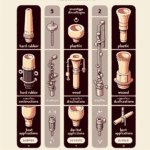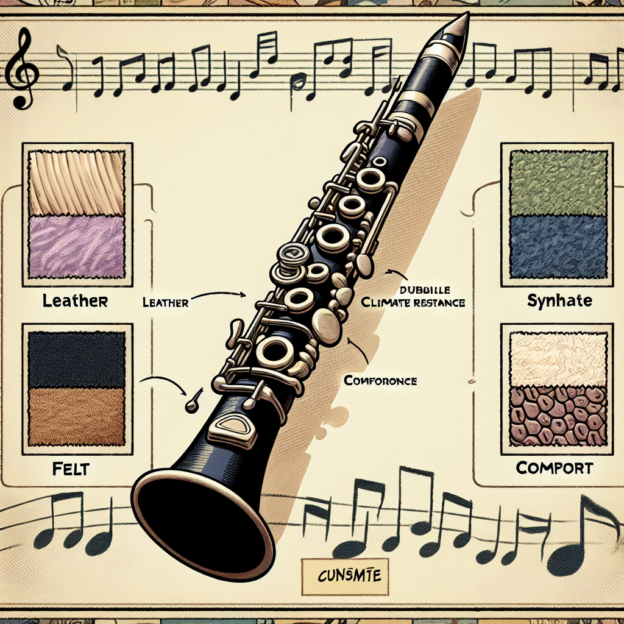Clarinet pad materials might not be the first thing that comes to mind when discussing these instruments, but they're incredibly important. While musicians often focus on mouthpieces, reeds, and barrels, those small pads under the keys significantly impact playability, sound, and longevity. This guide explores the various options for clarinet pads, with a nod to the quality and reliability found in Martin Freres Clarinets.
Your clarinet's pads play a crucial role in managing air leakage and producing the rich, round tone that players adore. The type of pad you choose can significantly influence your performance quality, maintenance needs, and long-term costs. Ready to learn more? Let's dive into the world of clarinet pads.
Leather Pads: The Traditional Performer
Leather pads are often considered the “classic” choice. They're known for their durability and ability to create airtight seals, making them ideal for frequent players. Leather's flexibility ensures a tight fit over tone holes, minimizing the risk of leaks. However, there's a catch – leather pads can struggle in humid environments. Excessive moisture can cause them to swell or lose shape, particularly without proper maintenance.
If you're looking at a vintage Martin Freres Clarinet, it's likely equipped with leather pads. It's almost like holding a piece of musical history in your hands!
Synthetic Pads: The Modern Powerhouse
Synthetic pads have revolutionized the clarinet world, offering exceptional stability across various climates. These pads, typically made from durable plastic or silicone, resist moisture absorption better than leather and are less likely to wear unevenly. Sounds perfect, right?
However, synthetic materials can subtly change a clarinet's sound profile. They might produce a brighter tone, which may not suit those seeking a warmer, more traditional clarinet sound. Despite this, their reliability is unmatched, explaining why many players prefer modern Martin Freres Clarinets fitted with these innovative components.
| Pad Material | Pros | Cons |
|---|---|---|
| Leather | Durable, airtight seal, traditional sound | Sensitive to humidity, requires more maintenance |
| Synthetic | Climate-resistant, low maintenance, consistent | May alter sound profile, brighter tone |
| Felt | Affordable, good for beginners, soft closure | Less durable, can compress over time |
| Cork | Precise, resistant to environmental changes | Harder to repair, less plush feel |
Felt Pads: Soft But Mighty
Felt pads are often seen as the budget-friendly option. Light, soft, and easily available, they're common in student clarinets. Think of them as the cushions of the clarinet world – they provide good padding and adequate sealing for beginners who are still fine-tuning their technique.
The downside? They may not withstand extended use very well. Felt pads can compress or wear through over time, affecting their ability to create an airtight seal. For casual or part-time clarinetists, they might suffice. However, serious players might want to consider other options.
Cork Pads: The Powerhouse of Precision
Cork pads are a specialized option, typically used for specific keys that demand high precision, like the register key or throat tones. Cork is a sturdy, non-compressible material that stands up well to environmental changes. If you often play outdoors or in varying temperatures, cork pads could be your go-to choice.
What are the drawbacks? Cork can be trickier to work with during repairs or replacements, requiring an expert touch to bevel and fit perfectly. They also lack the plush closing feel that leather or synthetic options provide.
Choosing the Right Pads for Your Clarinet
Selecting clarinet pad material depends on your playing style, local climate, and personal preferences. If you're in a humid area, synthetic pads might be a better choice than leather. If you're after a certain warmth in your sound, leather could be worth the extra care it requires.
Often, a mix of materials works best. For instance, you might find a Martin Freres instrument with cork pads on its precision keys and leather pads elsewhere. This combination offers both durability and tonal quality, giving musicians the tools they need to perform at their best.
Caring for Your Pads
Regardless of the material, proper care can extend your clarinet pads' lifespan. Here's a quick guide to keep them in top shape:
- Always swab your clarinet after playing to remove moisture.
- Store it in a stable, climate-controlled environment – avoid extreme heat or humidity!
- Don't press on keys unnecessarily while the clarinet is in storage.
- Regularly check your pads for signs of wear, tear, or air leaks.
Pro tip: If your pads show signs of wear, don't rush to replace them. Consult a skilled repair technician first. They might be able to reseat or repair old pads, saving you money in the process. If you own a prized Martin Freres instrument, this level of care isn't just an option – it's essential.
Final Thoughts on Pad Comparisons
While the choice of clarinet pads might seem minor, it significantly impacts sound production and playability. From leather and cork to synthetic and felt, each material has its strengths and weaknesses. Whether you're a beginner or an experienced player aiming for perfection, trying different pad materials can enhance your musical journey. And remember, instruments like those from Martin Freres Clarinets serve as excellent examples of attention to musical detail.







